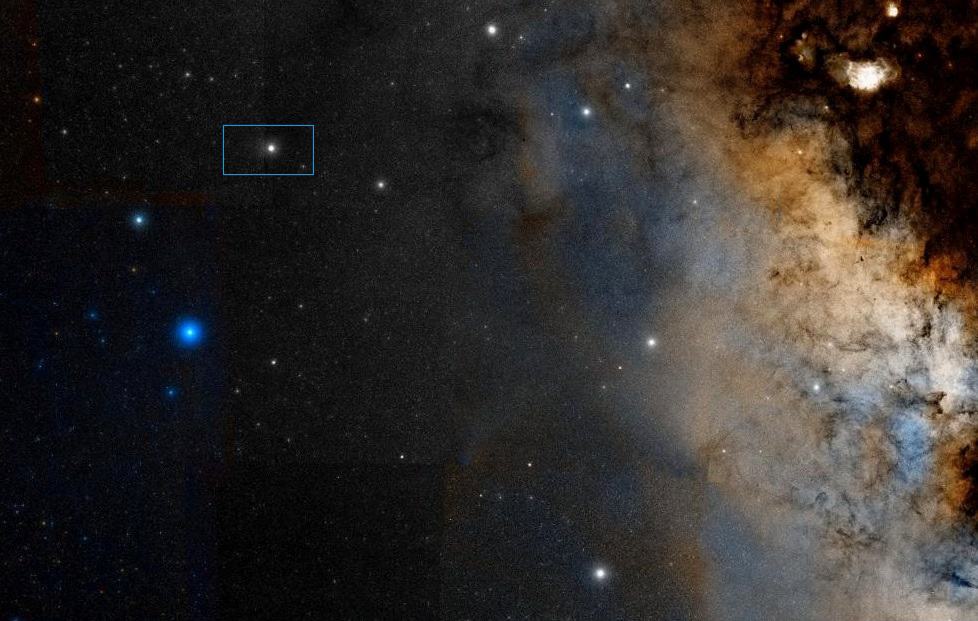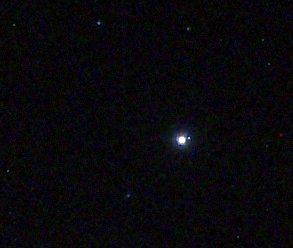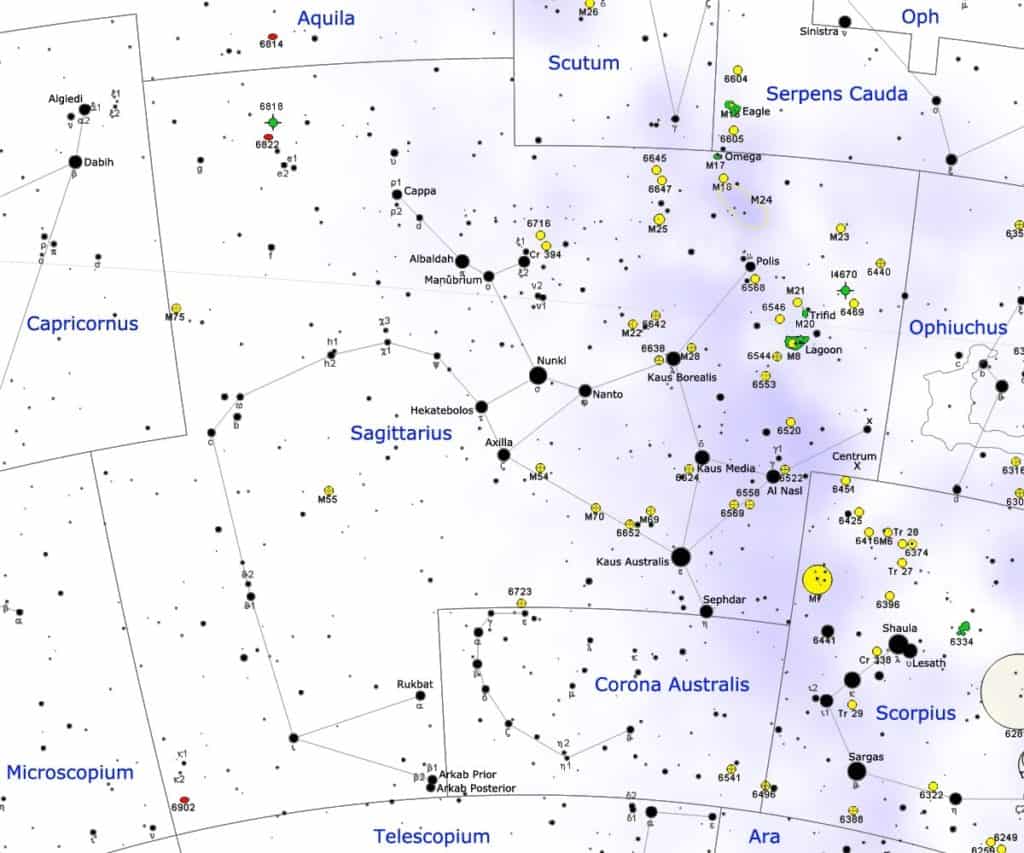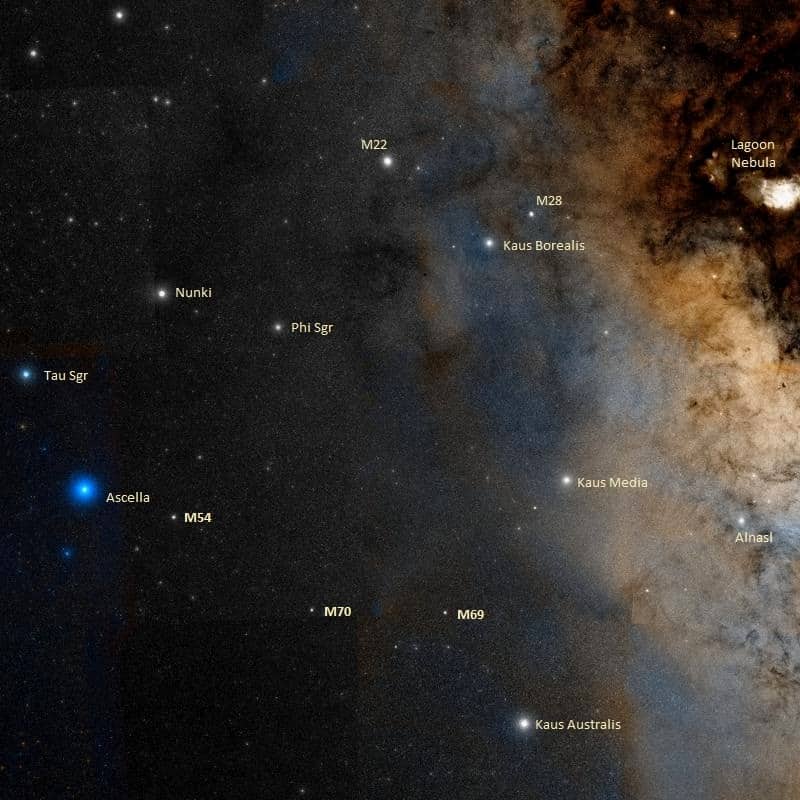Nunki, designated as Sigma Sagittarii, is the second-brightest star in the zodiacal constellation of Sagittarius. It is visible with the naked eye, being the 52nd brightest star in the night sky.
Key Facts & Summary
- Nunki / Sigma Sagittarii is located at around 228 light-years / 70 parsecs away from the Sun.
- It is a hot blue-white main-sequence star of spectral type B2.5 V.
- Nunki has an apparent magnitude of 2.05, being the second brightest star in its constellation after Kaus Australis.
- Nunki is slightly fainter than Algieba in Leo, Hamal in Aries, and Diphda in Cetus, but outshining Menkent in Centaurus and Alpheratz and Mirach in Andromeda.
- Nunki has an absolute magnitude of -2.17.
- Compared to our Sun, Nunki is around 3,300 times brighter.
- The average surface temperatures on Nunki are around 18,890 K, much hotter than on our Sun.
- Nunki is more massive than our Sun, having 7.8 solar masses.
- The radius of Nunki has been estimated to be at around 4.5 solar radii.
- The radial velocity of Nunki has been recorded at around -11.2 kilometers / -6.9 miles per second.
- The star is around 31.4 million years old, quite young in comparison to our Sun.
- Nunki is a very fast-spinning star, having a rotational velocity of around 165 km / 102.5 mi per second.
- X-ray emissions have been detected from Nunki.
- Nunki has a 10th magnitude companion situated at around 5.2 arcminutes away.
- Since Nunki is 3.45 degrees south of the ecliptic, it can be occulted by the Moon and rarely by planets.
- In the constellation of Sagittarius, Nunki marks the vane of the celestial Archer’s arrow.
- The best time to observe Nunki and other objects in Sagittarius is in August.
The star’s name, Nunki is of Assyrian or Babylonian origin, but its meaning is unknown. The name was recovered by archaeologists and revealed by Richard Hinckley Allen in his Star Names: Their Lore and Meaning (1899).

Sigma Sagittarii was identified with Nunki, the Star of the Proclamation of the Sea – as mentioned in the Euphratean Table of the Thirty Stars. The sea in question refers to the area of the sky occupied by several constellations associated with water: Delphinus, Aquarius, Capricornus, Pisces, and Piscis Austrinus.
The Greek astronomer Aratus called this area the Water around 270 BC.
Formation
Nunki is an exceptionally young star, having an estimated age of 31.4 million years. This is over a hundred times younger than our Sun. Nunki formed from an interstellar medium abundant in gas and dust.
Gravity pulled the swirling gas and dust together and when the right temperature was reached, it resulted in the birth of Nunki, the second-brightest star in the zodiacal constellation of Sagittarius.
Distance, Size, and Mass
Nunki is located at around 228 light-years / 70 parsecs away from the Sun. It is visible to the naked eye if the conditions are favorable enough.

Nunki has around 4.5 solar radii or 450% of the Sun’s radius. It is thus around 9 times bigger than our Sun. The star is also much more massive, having 7.8 solar masses, or 780% of our Sun’s mass.
Other Characteristics
Nunki / Sigma Sagittarii is a hot-blue hydrogen-fusing dwarf, on the main-sequence. Its spectral type is B2.5 V. Nunki has an apparent magnitude of 2.05 and an absolute magnitude of -2.17.

Nunki is around 3,300 times brighter than our Sun, with much of its light being emitted in the ultraviolet invisible part of the spectrum. The average surface temperatures on Nunki have been recorded at around 18,890 K, is it thus 3.2 times hotter than our Sun.
Nunki is also an X-ray emitting star, it has an X-ray luminosity of 1.2 x 1028 erg s-1. The star is also a fast spinner having a rotational velocity of around 165 km / 102.5 mi per second.
Nunki has an optical companion, a 10th magnitude star which lies at about 5.2 arcminutes away. Since Nunki is 3.45 degrees south of the ecliptic, it can be occulted by the Moon and rarely by planets.
Due to its high mass and fast internal fusion rate, Nunki will not live for much longer.
Location
Nunki / Sigma Sagittarii is located in the zodiacal constellation of Sagittarius, the celestial archer. It is the second-brightest star in its constellation after Kaus Australis.

Nunki marks the vane of the celestial Archer’s arrow. The constellation of Sagittarius can be seen in the rich star field of the Milky Way in the southern sky.
Nunki is easy to identify since it is among the brightest stars and it also forms the prominent summer asterism known as the Teapot. It marks the top left corner of the asterism.

Nunki is also part of the Little Milk Dipper, a pattern of five stars that outline the Teapot’s handle, along with Ascella, Kaus Borealis, Phi, and Tau Sagittarii. The other stars that form the Teapot are Alnasl, Kaus Media, and Kaus Australis.
For northern observers, the Teapot asterism is prominent above the southern horizon in the summer months. Nunki is close to several globular clusters, such as the Sagittarius Cluster, Messier 28, and Messier 54.

The constellation of Sagittarius hosts several bright stars and many interesting deep sky objects. These include the bright nebulae Messier 8 – the Lagoon Nebula – Messier 17 – the Omega Nebula, Messier 20 – the Trifid Nebula, the open clusters Messier 18, Messier 21, Messier 23, and the globular clusters Messier 22 and Messier 28. The best time to observe the stars and deep-sky objects in Sagittarius is during the month of August.
The Future
Though Nunki is a very young star, it will probably end its life within the next 50 million years. This is due to Nunki’s high mass and fast internal fusion rates.
When Nunki will reach the end of its life cycle, it will turn into a white dwarf with a mass quite similar to that of our own Sun. It will then gradually fade.
Did you know?
- The star Nunki was associated with the city of Erdu and the Akkadian Gu-shi-rab-ba – The Yoke of the Sea – the patron asterism of the city.
- In Sumerian mythology, it was the home of the god of water, creation, knowledge, crafts, and mischief, named Enki, or Ea in Akkadian and Babylonian myths.
- Gu-shi-rab-ba- was believed to be the pattern formed by Nunki, Ascella, and Albaldah.
- Nunki / Sigma Sagittarii is also known as Sadira – the 17th-century Egyptian astronomer Al Achsasi al Mouakket listed the star as Thanih al Sadirah – “the second returning ostrich” – in his Calendarium written in 1650. Sigma, Phi, Zeta, Chi, and Tau Sagittarii were the Arabic Al Na’am al Sadirah – the Returning Ostriches, while Kaus Borealis was known as their keeper.
- The English astrologer Vivian E. Robson listed Nunki as Pegalus – the sea – in Latin, in his book The Fixed Stars and Constellations in Astrology.
- The Chinese know Nunki as the Fourth Star of the Dipper – Dipper is a Chinese asterism formed by Phi, Lambda, Mu, Tau, and Zeta Sagittarii.
- Nunki is one of the 58 stars used for navigation. The only other star used for navigation in the constellation of Sagittarius is Kaus Australis, the brightest star in the constellation.
- Nunki can be occulted by the Moon and rarely by planets. The last time Nunki was occulted by a planet, was in 1981 when it was occulted by Venus.
Sources:
Image Sources:
- https://i.pinimg.com/600×315/0d/74/46/0d744614c44a099d7d2b1aa685040fff.jpg
- https://www.star-facts.com/wp-content/uploads/2019/09/Nunki.jpg?189db0&189db0
- https://photos1.blogger.com/blogger/5468/437/320/Venus_nunki_18-11-05a.jpg
- https://www.star-facts.com/wp-content/uploads/2019/09/Sagittarius-constellation.jpg?189db0&189db0
- https://www.star-facts.com/wp-content/uploads/2019/09/Teapot.jpg?189db0&189db0
- https://www.constellationsofwords.com/images/stars/Nunki.JPG
